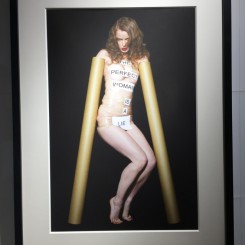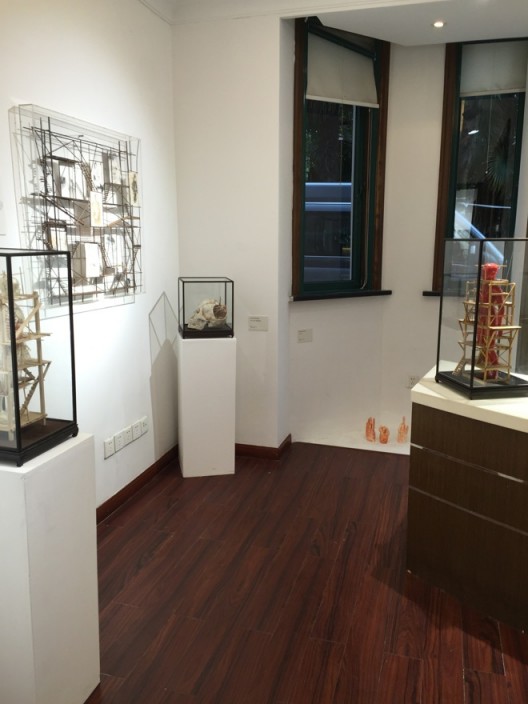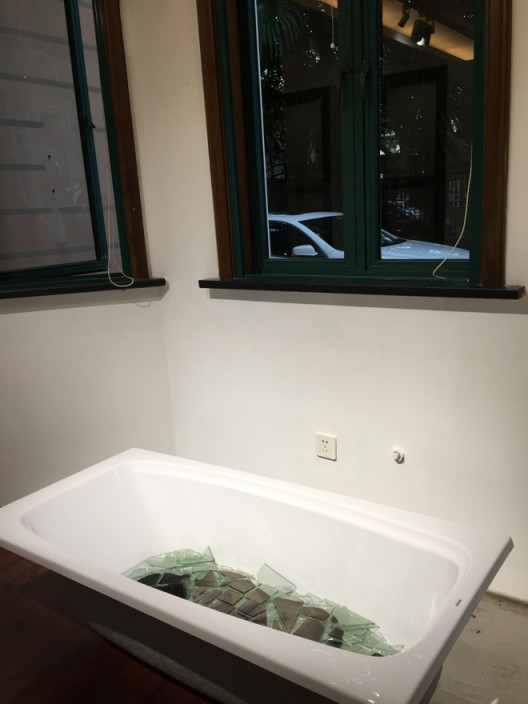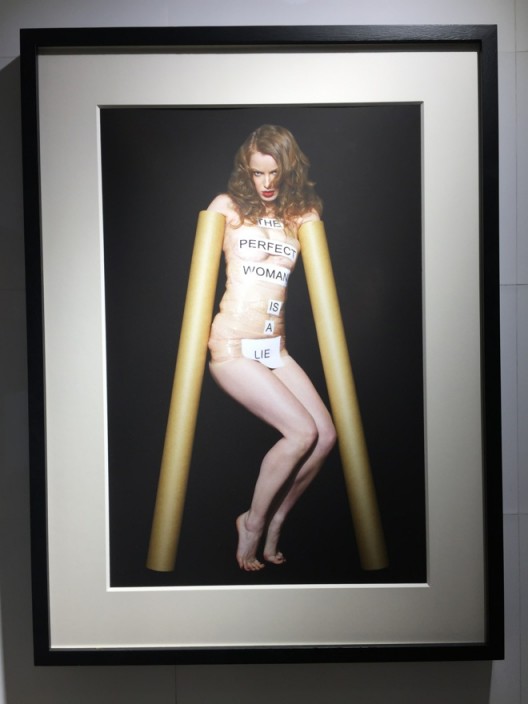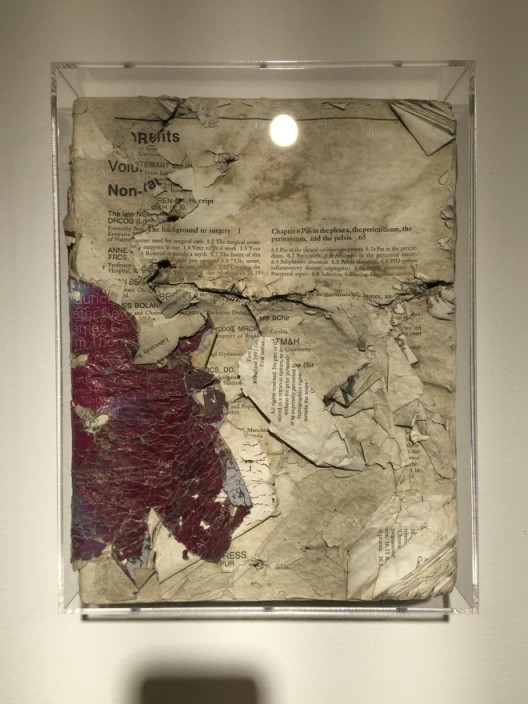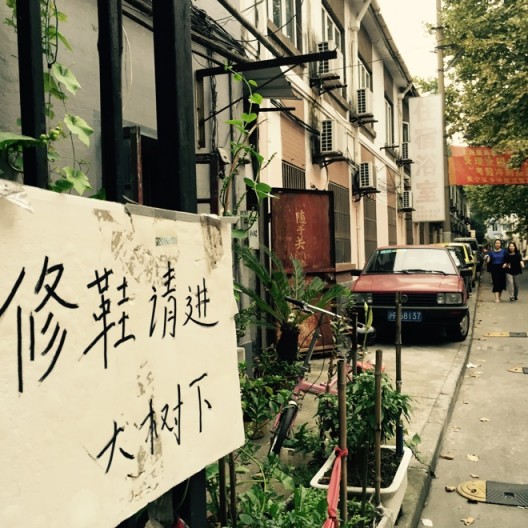WhyWhyArt Art Space (no. 1086 Yuyuan Road), September 5 – October 25, 2015
A small street in the heart of Shanghai’s city center, Yuyuan Road is lined on either side with Chinese plane trees, winding west from Jing’an Temple and dotted with shops of local charm. Obscured by the shade of the plane trees are crooked little alleyways hiding unseen gems—Yugu Cun, Taoyuan Fang, the Wang Boqun Garden Residence, and Tongren Hospital. All of these Western-style buildings have seen owners come and go, but life inside these lanes and alleyways continues to be as vibrant and raucous as Eileen Chang described, “flowering oleanders peeked out over the top of the wall. The courtyard inside was small, but it counted as a garden”.
One of the old houses on the garden path of Yuyuan Road used to be a “home for treatment of future ailments” during the Republican (Kuomintang) period; recently, it has been transformed into a new art space called WhyWhyArt. The concept of “treating future ailments” is found in traditional Chinese medicine, where proactive treatments can prevent future illnesses. Practitioners believe that following natural laws and adhering to a strict conditioning regimen are the secrets to keeping the body in peak health. The opening exhibition in this storied location took the “Community Hospital” theme and interlinked trauma, the body, meditation, and healing to create a cohesive exhibition with works by twenty international artists.
The exhibition space has been divided into “clinics” of various sizes, which allow “patients” (visitors) and “doctors” (art pieces) to interact in private. Most Chinese hospitals do not allow for this level of privacy between doctor and patient in their clinics, and while such “community hospitals” are commonplace in nations with a sound social welfare system, in China they remain merely an ideal that is sought after. Many of the exhibiting artists have lived or studied in China, and their familiarity is obvious from their use of “Chinese symbols”. Christian Chambenoit reshapes the traditional Chinese acupuncture diagram with a Westerner’s aesthetic in order to explore the physical effectiveness of treatment and placebo effects based on personal experience. The placebo effect—the illusion produced by the brain of having been cured— is a paradox related to the function of drugs in modern medicine, but it is also the basic theory of “curing the heart to cure the root of the problem”—a foundational precept in Chinese medicine.
In China, antibiotics are more overused than anywhere else in the world, but how do you go about telling the parents of an only child not to overmedicate in cases of slight headache or fever? Monika Lin uses meticulous traditional Chinese brushwork to paint lushly blossoming flowers in “Double Happiness”, but the silhouettes of children who have passed on convey a restless sense of unease.
Much as illness is a physical sensation, medicine represents the psychological expectation of healing. When dealing with an ailment, the hospital becomes a place to vent emotions and sustain hope. Roland Darjes placed a white bathtub in the largest clinic of “Community Hospital”, filling it with broken glass and shattered mirrors. The sharpness of the shards is quite daunting to look at. In Susanne Junker’s piece, the artist departs from her own experience of pregnancy and childbirth by taking selfies of her body wrapped in tape, contemplating the female form and gender. From the time she became pregnant until she became a mother, she Instagrammed one selfie a day to resolve her anxieties and expectations. Not knowing whether the child would be born male or female, Junker questions how gender can influence a person’s destiny.
The healing power of art has long been one of the methods used by psychologists in clinical practice. In the artist’s creative process, the work itself becomes simultaneously the subject and the object. The most famous example of art as a cure is the use of painting by surrealist artists to analyze their dreams—an approach which elicits subconscious emotions at the core of human nature. In “Community Hospital”, Joyce Rohrmoser documents her journey to a Catholic church while wearing a hearing aid. She awaits a miracle, and when she discovers she is able to perceive the sounds of the sea, plants, animals, and video cameras, this artistic work inspired by her own experience of deafness becomes an animistic religious experience.
The most powerful piece in the exhibition is set of medical textbooks placed inside a row of glass display cases hung on a corridor wall. Piers Secunda displayed this series of medical textbooks which bear bullet holes left by machine gun fire. He rescued them, with the help of a friend in Afghanistan, from the ruins of the staff quarters of a hospital bombed by the Taliban in Kabul. Secunda’s original creative motivation seems to have been about providing a novel political and geographical perspective, and is inevitably colored by a Westerner’s point of view; but in his subsequent artistic practice, reality became what art could not imagine. The friend who took him to the ruins of that hospital in Kabul has been shot and killed by the Taliban.
The organizers of “Community Hospital” approached the exhibition with the rigor of a medical practitioner. The curator Zane Mellupe has taken full advantage of the history of the space, carefully planning an art exhibition that is universally relevant while managing to maintain a discourse on the fate of humanity. The exhibition evokes all the trivialities and honesty of life in these Shanghai alleyways. Exiting from this place which was once a “home for treatment of future ailments”, one sees a sign hanging from an adjacent alleyway. It reads “Shoe Repair in the Shade, Please Enter”. One is reminded that there is more in the world that needs mending than shoes.

